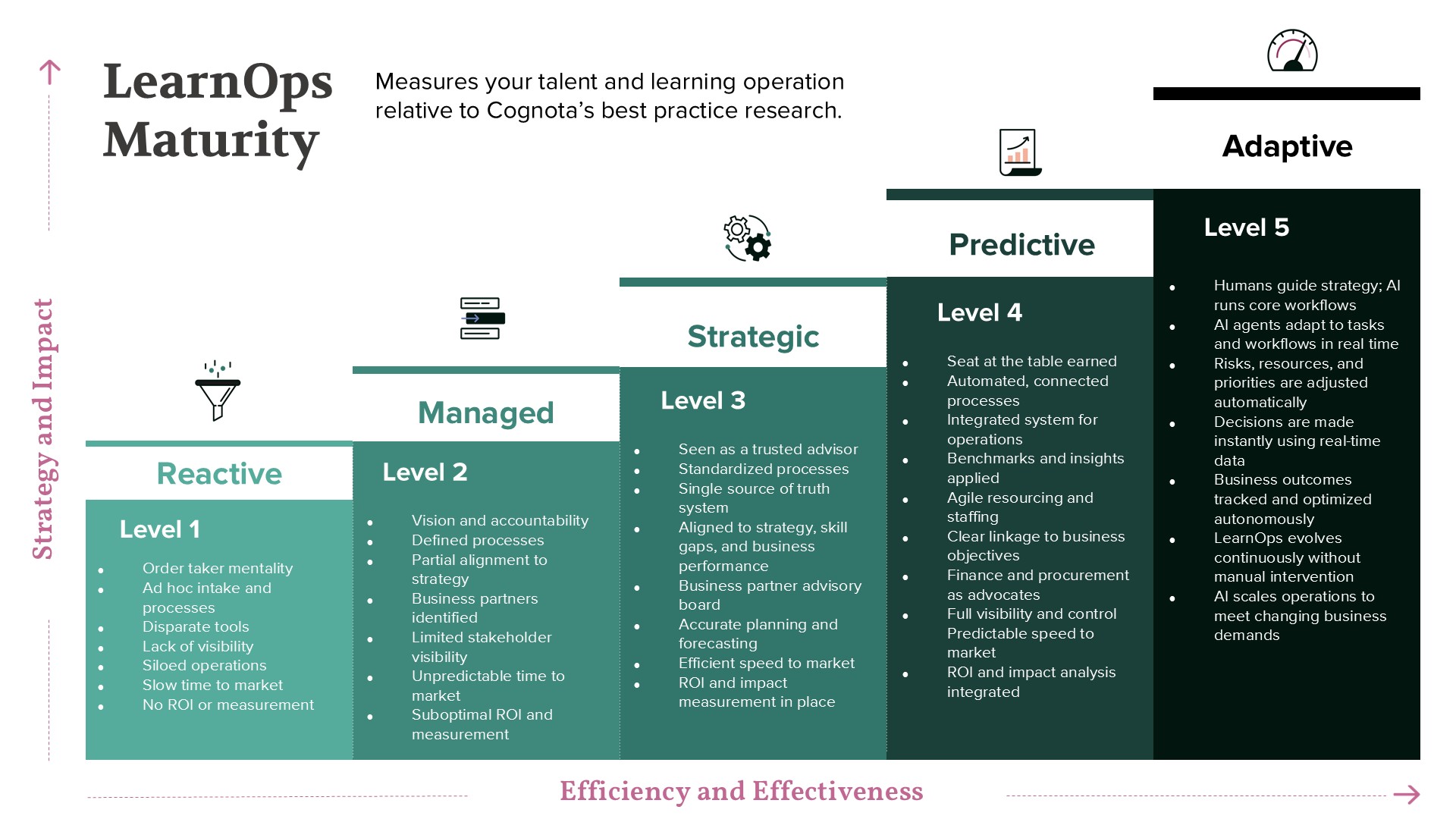- Align
- Plan
- Execute
- Measure
- Optimize
- Summary
Move the slider up/down found on the left of each attribute to indicate your current maturity level.
0% is least mature and 100% is most mature.
-
Strategic Alignment
Click to expand/collapseDoes Your Talent and L&D Strategy Support Business Goals?
0%Is There a Clear Process for Investing in Talent and L&D Programs?
0% -
Operating Model
Click to expand/collapseIs There a Clearly Defined Operating Model for Governance?
0%How Effective Is Collaboration Across Teams in Talent and L&D?
0% -
Business Partnerships
Click to expand/collapseIs There a Clear Process for Managing and Prioritizing Stakeholder Requests?
0%Do You Measure Stakeholder Engagement to Maintain Strong Partnerships?
0%
-
Strategic Programs
Click to expand/collapseAre You Setting Goals and Evaluation Plans with Stakeholders Before Executing Programs?
0%Do You Collaborate with Business Partners to Design Learning Solutions?
0% -
Capacity and Budget
Click to expand/collapseDo You Estimate and Plan Capacity Needs Before Launching Projects?
0%Does Your Team Actively Manage and Track a Budget?
0% -
Learning Solutions
Click to expand/collapseAre Learning Solutions Thoughtfully Designed and Customized?
0%Is AI Integrated Into the Design and Delivery of Learning Solutions?
0%
-
Project Management
Click to expand/collapseDo You Track the Progress of Projects With Clear Metrics and Visibility?
0%Does Your Team Track and Adjust Capacity and Budgets as Projects Progress?
0% -
Learning Experiences
Click to expand/collapseAre Learning Experiences Effectively Delivered to Support Learner Needs?
0%How Does Your Team Balance Business Needs With Learner Needs When Delivering Learning Experiences?
0%
-
Program Evaluation
Click to expand/collapseHow Do You Measure the Effectiveness of Programs?
0%Are You Leveraging Storytelling to Drive Decisions using Data?
0% -
Business Impact
Click to expand/collapseDo You Assess the Impact of Programs on Business Goals?
0%Do You Calculate the ROI of Programs to Support Investment Decisions?
0%
-
Industry Benchmarks
Click to expand/collapseDo You Compare Internal Practices Against Industry Benchmarks for Continuous Improvement?
0%Do You Regularly Evaluate and Make Improvements to Your Learning Operations?
0% -
Data and Reporting
Click to expand/collapseDo You Track and Use Program Data to Make Improvements?
0%Do You Track and Use Operational Data to Make Improvements?
0% -
Adaptive Operations
Click to expand/collapseDo You Use AI to Support Decisions and Execute Tasks in Learning Operations?
0%Are Your Learning Operations Prepared to Leverage AI for Optimization?
0%
Your Maturity Model Score is: Reactive
Click here to fill in your personal information to access your results and learn more about Cognota Assist Program for additional support or schedule a demo today.
Maturity Model Score - 2025
"*" indicates required fields

